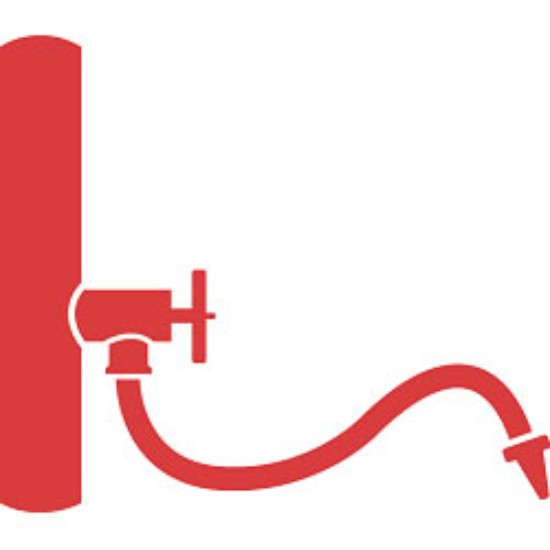
Occupant Use Fire Hoses
The small hoses inside facilities are typically referred to as “Occupant Use Hoses.” This is a reflection of the fact that professional fire services will not use these hoses, but their own professional-grade hoses. Very seldom, if ever, will a fire department utilize the hose available within a facility and one of the reasons is that the hose is not maintained by the fire department so they cannot be sure of its maintenance history and current state.
So, what are occupant use fire hoses for?
Occupant use fire hoses were originally intended for building occupants to use like they would an extinguisher, to fight incipient stage fires. Concerns of liability have changed this standard though and most companies do not encourage employees to fight incipient stage fires. Employee safety should always be your primary concern. Before deciding whether your facility should allow the use of hoses for incipient stage firefighting, look closely at your hazards, resources, and safety issues.
One special use of fire hoses is during a time when your sprinkler system may be down for repairs or improvements. Having a fire hose charged and available can provide protection during this vulnerable time. It may also be a precaution you can take when hot work is being done in your facility. During any hot work activity, it is possible for sparks to smolder for a long period of time which may result in a fire. While an extinguisher can also be used, extinguishers only provide a few seconds of discharge which may not be sufficient during hot work situations.
Why do fire hoses need to be inspected?
Like any Life Safety inspection, the purpose of fire hose inspections is to ensure it is in operable condition for use during an emergency. There is a specific concern with fire hoses, since they operate under pressure from the water flow, if there is a break in a worn and unmaintained hose it can cause a portion of the hose to whip around uncontrollably, potentially causing injury.
When should you have your hoses inspected professionally?
Every year, or after any use, you should have your fire hose inspected by a professional for a visual hose, nozzle and coupling inspection. During this inspection, your Life Safety Partner will unrack, unreel/unroll and physically inspect your hose to determine that the hose, couplings, and any nozzle have not been vandalized, they are free of debris, and exhibit no evidence of mildew, rot or damage by chemicals, burns, cuts, abrasion or vermin. They will also check that nozzle controls and adjustments operate properly, inspect gaskets for presence, tight fit, and deterioration, and couplings for damage, corrosion, and rotation.
Within 5 years of manufacture, and every 3 years after that, your Life Safety Partner should perform a Hose Pressure Service Test. Using a hose testing machine, they will raise the hose pressure slowly to 45 psi and bleed off air, then raise the pressure slowly until the service test pressure is attached and maintained for 3 minutes.
Please note, these testing and inspections requirements are for occupant use fire hoses. If you have a fire brigade and a structural fire brigade hose cabinet, then both testing and inspection must be completed on an annual basis.
What self-inspections should you do to check for problems in between professional inspections?
In between your annual inspection, it’s a good idea to have someone assigned to perform a brief visual inspection of your fire hose. This can be done at the same time they perform your monthly extinguisher inspections. Look for cracks, weak areas, signs of fraying, vandalism of any type, and broken couplings. If you see signs of any damage, you should contact your Life Safety Partner for assistance.
A1 is a leading expert on the latest technology in life safety. To find out more information or to ask a question, click here or call us at 1-800-859-6198.
